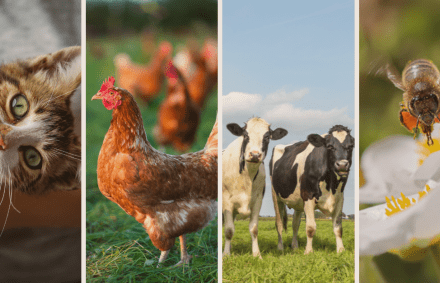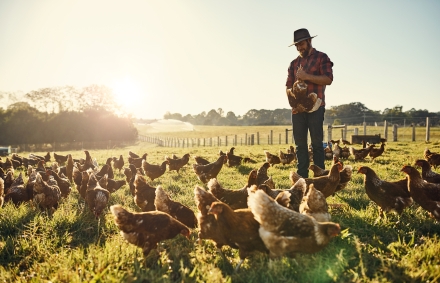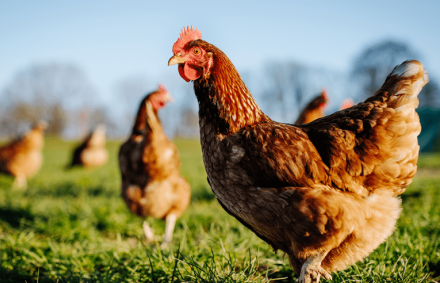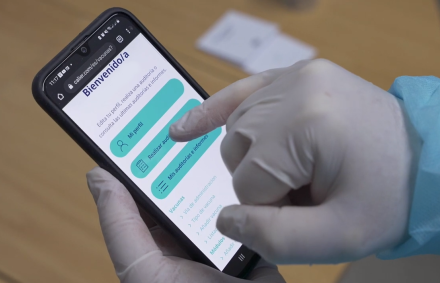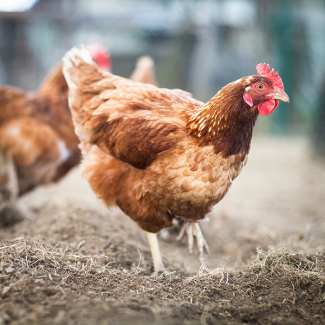
Salmonellosis continues to be one of the most serious challenges in poultry farming. On the one hand, that which originates from strains causing poultry diseases and, above all, from those serotypes/serovars causing food-borne toxicosis (food poisoning) in humans through the consumption of eggs and other products of animal origin contaminated with such strains.
To control these strains, national salmonella control programmes have been implemented to ensure the health status of animals and to prevent transmission to humans through the food chain. These national programmes contemplate the use of live Salmonella vaccines in poultry.
A specific national programme for laying hens exists to control certain Salmonella serotypes.
According to the Directorate-General for Agricultural Production Health of the Ministry of Agriculture, Fisheries and Food, the aim of this programme is 'to control the presence of Salmonella Enteritidis (SE) and Salmonella Typhimurium (ST), including monophasic strains of Salmonella Typhimurium with antigenic formula 1 , 4,[5],12: i:-, in adult laying hens of the species Gallus gallus whose eggs are intended for human consumption, and the reduction of the maximum percentage of positive flocks of adult laying hens to 2% or less'
There are vaccination plans to prevent avian salmonellosis in laying hens that include vaccination against the Salmonella serotypes indicated in the national control programme.
Since 2016, Laboratorios Calier has had Primun Salmonella E on the market to fight against salmonella in poultry; this is a live attenuated salmonella enteritidis vaccine, indicated for the active immunisation of future laying hens and breeders.
One very important consideration about the vaccines used against avian salmonellosis is that they do not interfere with the national salmonella control programmes, as well as with the self-control audits for farms that administer these vaccines. To safeguard this, it is essential to be able to adequately differentiate vaccine strains from wild or field strains in different matrices so as to control both the excretion levels of the strains, as well as to ensure adequate vaccination through drinking water for the appropriate immunisation of all animals.
Currently, salmonella in poultry is diagnosed and isolated using the official method; i.e. ISO 6579 Standard, called "Microbiology of food for human consumption and animal nutrition". The traditional methodology of preparing a previous pre-enrichment and then using selective enrichment media to isolate the salmonella strain present in the samples is used to detect salmonella spp in different samples.
There are also several alternative methods to ISO 6579 that could be used in self-control tests within the national salmonella control programmes and which need to be validated against the reference method. Among these alternative methods for diagnosing the presence of salmonella in poultry is the use of modified semi-solid media, miniaturised kits, semi-automated systems and immunological techniques.
The salmonella enteritidis vaccine strain included in the Primun Salmonella E vaccine has a number of differentiating characteristics that help avoid confusion with field strains when using traditional methodology. There are two (2) important characteristics; namely, that it is an immobile strain and that it does not produce SH2.

The methodology of combining the traditional diagnosis and isolation method of salmonella enteritidis in poultry with the different sensitivities and/or resistance of the vaccine strain to specific antibiotics is currently used to distinguish the vaccine strain from other field strains of Salmonella enteritidis.
The traditional methodology successfully isolates a salmonella strain, from which, and by adding some antibiotics at certain concentrations to the culture medium, we are able to identify whether the isolated strain is a field strain or the vaccine strain. This technique is valid both to verify the presence of the vaccine strain in drinking water and thus ensure that the vaccination has been correct, as well as to determine for how long the excretion of the strain into the environment occurs from the vaccinated animals.
One of the specific characteristics of the salmonella enteritidis strain present in Primun Salmonella E is its pattern of sensitivity and resistance to certain antibiotics. This pattern is totally different from that of the same source strain
This methodology can adequately monitor everything that surrounds the vaccination process against salmonella in poultry, from the start of vaccine administration to the subsequent monitoring of the farms that have been vaccinated.
Given this profile of sensitivity and resistance to certain antibiotics, “in house” techniques have been developed to determine the vaccine strain as well as rapid detection kits to differentiate between the vaccine strain and any field strains.
Calier makes available to users of Primun Salmonella E both methods that monitor vaccination as well as differentiating between field and vaccine strains. The ability to differentiate is in line with the directives expressed in the National Salmonella Control Programmes which require that attenuated vaccines have a suitable method for bacteriological differentiation.
